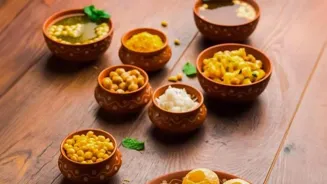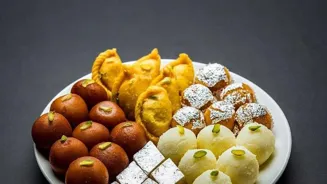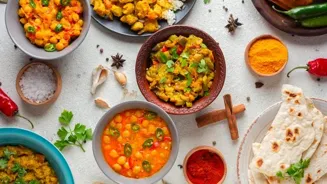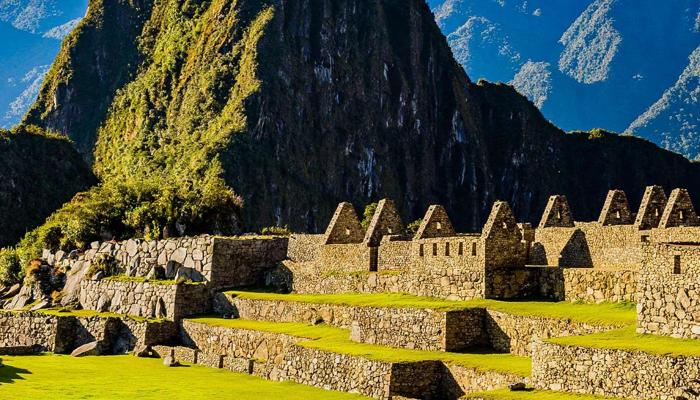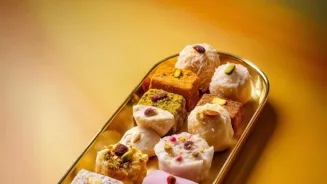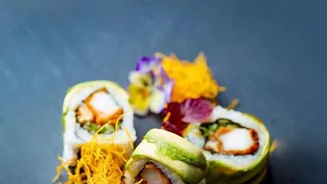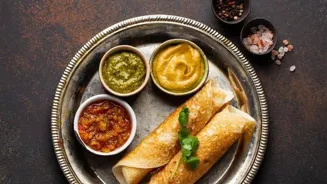Unveiling the Sweet History of Indian Desserts! 🍬 Dive into a flavorful journey through time. Discover the origins, evolution, and tantalizing flavors that define India's culinary heritage. Read more
for a sweet surprise!
India, a land known for its rich culture and diverse traditions, also boasts a fascinating history of desserts. From ancient recipes passed down through generations to regional specialties that tantalize the taste buds, the sweet treats of India offer a glimpse into the country's culinary evolution.
This article delves into the sweet journey of Indian desserts, exploring their origins, key ingredients, and evolution over time.
Indian desserts rooted in ancient traditions, tied to religious significance
The foundations of Indian desserts can be traced back to ancient India, where the concept of sweetening food was closely linked to religious offerings and celebrations. Sugarcane, native to the Indian subcontinent, played a significant role in the development of early sweet dishes.
Honey, another natural sweetener, was also widely used. Ancient texts mention "kheer," a rice pudding cooked in milk and sweetened, as one of the earliest desserts. "Ladoo," a ball-shaped sweet made from flour, sugar, and ghee (clarified butter), also has ancient roots.
These early desserts were simple yet satisfying, prepared with locally available ingredients and often associated with auspicious occasions. The use of milk, grains, and fruits formed the basis of many of these traditional sweets, reflecting the agrarian society of the time.
These ingredients were considered pure and sacred, making them ideal for religious offerings.
Mughal era transformed Indian cuisine with rich desserts and elaborate flavors
The Mughal era brought significant changes to Indian cuisine, including the introduction of new ingredients and cooking techniques. Persian and Central Asian influences blended with local traditions, resulting in a fusion of flavors and culinary styles.
Rich desserts like "halwa," made from semolina, flour, or lentils, were introduced, adding a touch of royalty to the dessert repertoire. "Barfi," a milk-based sweet fudge, also gained prominence during this period.
The Mughals were known for their lavish feasts and elaborate desserts, which were prepared by skilled chefs using high-quality ingredients. The use of dried fruits, nuts, and aromatic spices like cardamom and saffron became more common, adding complexity and richness to the desserts.
The presentation of these sweets was also given importance, with intricate designs and decorations becoming a hallmark of Mughal desserts. These additions made Indian deserts even more famous, more wanted.
Colonial era influences on Indian desserts and fusion recipes
The colonial era introduced new ingredients and techniques to Indian cooking, further influencing the development of desserts. Condensed milk, a British invention, became a popular ingredient, leading to the creation of new sweets like "milk cake" and variations of traditional recipes.
The Portuguese also introduced "custard" and other baked desserts to India, which were adapted to local tastes and ingredients.
The influence of colonial cuisine can be seen in the fusion desserts that emerged during this period, such as bread pudding with Indian spices and variations of traditional sweets using imported ingredients.
The availability of new ingredients made recipes and the introduction of new recipes was easier and with more variations. This era marked a period of culinary exchange and adaptation, as Indian chefs experimented with new flavors and techniques while retaining the essence of traditional desserts.
It was a golden chance to experiment.
Post-independence, Indian desserts modernized, regionalized, and gained popularity nationwide
Post-independence, Indian desserts underwent a process of modernization and regionalization. With increased access to ingredients and technology, new variations of traditional sweets emerged, catering to changing tastes and lifestyles.
Regional specialties gained popularity across the country, thanks to increased mobility and media exposure. Sweets like "rasgulla" from Bengal, "mysore pak" from Karnataka, and "ghewar" from Rajasthan became household names.
The rise of commercial sweet shops and bakeries also contributed to the wider availability of Indian desserts. These establishments offered a range of sweets, from traditional favorites to innovative creations, catering to different preferences and budgets.
The modernization of Indian desserts also involved the use of new packaging and preservation techniques, making them more accessible and convenient for consumers. It helped making the deserts portable for travelling purposes.
Modern dessert trends focus on healthier alternatives, emphasizing nutrition and natural sweetness
The health consciousness of modern times has spurred a wave of experimentation with healthier alternatives to traditional Indian desserts.
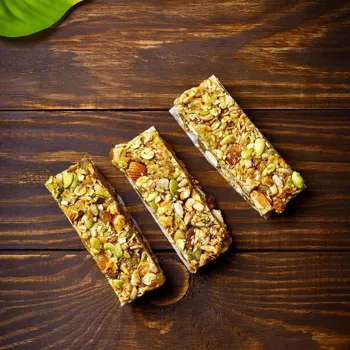
Chefs and home cooks are exploring the use of natural sweeteners like jaggery and dates, as well as incorporating healthier ingredients like nuts, seeds, and fruits. Sugar-free versions of popular sweets are also gaining popularity, catering to those with dietary restrictions or health concerns.
The focus on healthier desserts reflects a growing awareness of the importance of balanced diets and mindful eating. Consumers are increasingly seeking out sweets that are not only delicious but also nutritious and guilt-free.
The use of traditional ingredients like ghee, which is now recognized for its health benefits, is also making a comeback. It is all about finding healthier ways to taste sweetness and the original taste of sweetness.
Indian desserts: rich heritage, evolving globally, nostalgic delights for all
Today, Indian desserts are enjoyed not only in India but also around the world, thanks to the Indian diaspora and the increasing popularity of Indian cuisine.
From traditional mithai shops in bustling cities to Michelin-starred restaurants serving innovative Indian desserts, these sweet treats continue to delight and inspire.
The journey of Indian desserts is a testament to the country's rich culinary heritage and its ability to adapt and evolve over time. As new generations embrace traditional recipes and experiment with modern techniques, the future of Indian desserts looks bright and promising.
These deserts reminds people of home and the rich culture they possess. It is a perfect memory to relive and re-remember the deliciousness. Indian deserts are enjoyed by everyone that gets to taste them.
AI Generated Content. Glance/InMobi shall have no liability for the content